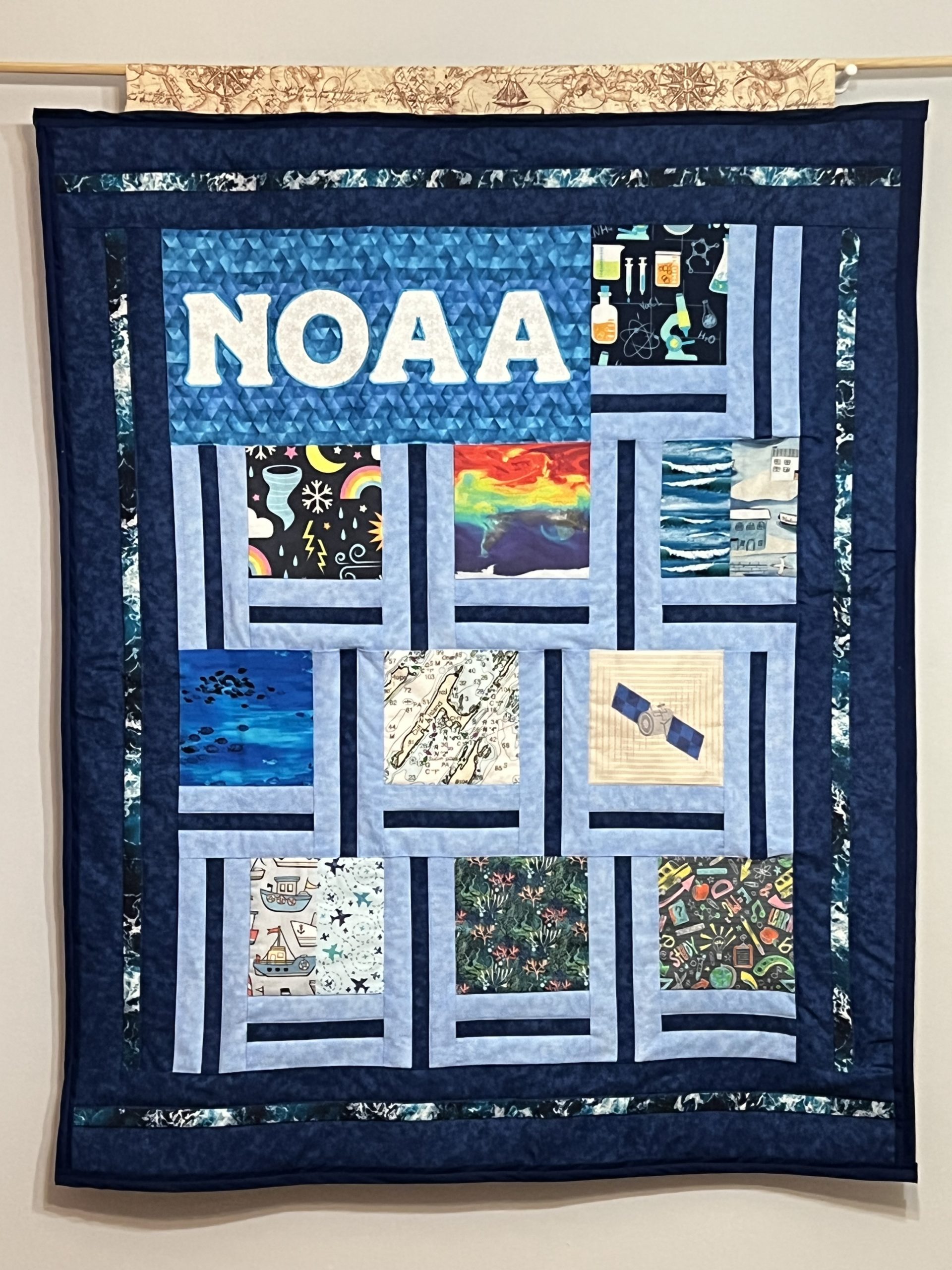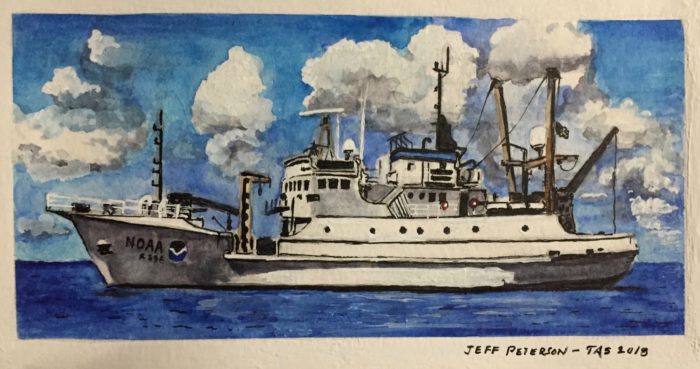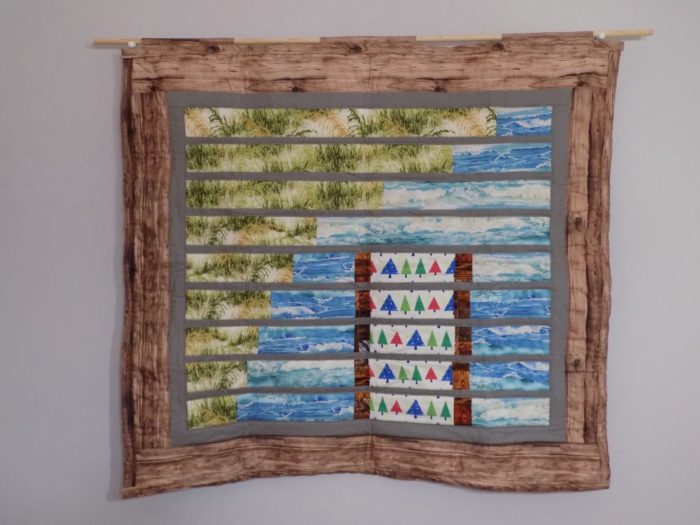
Navigating Science with Art
In the last decade, the acronym STEAM — science, technology, engineering, art, and math — has become a popular way of acknowledging that the arts have a vital role in STEM subjects.
The arts have long been a way to engage people in new ideas, and they can be an important tool in communicating science. Where data alone may alienate, visualized data can inform and contribute to comprehension. The scientist’s habits of mind and the artist’s habits of mind have many similarities, where observation, trial and error, perseverance, reflection, and revision are key in both disciplines. At times, artists may be participating in the scientific process without even realizing it.

TASA Jeff Peterson’s watercolor rendition of the NOAA Ship Oregon II
Last year, we shared the exploration stories of our Teacher at Sea Alumni. This year, we are taking on the theme of Art and Science Integration to celebrate the ways that our educators use the arts to engage their students and communities in the content and concepts that are important to a science literate society.
To kick off this year’s celebration of art and science, check out TASA Dr. Laura Guertin’s (NOAA Ship Thomas Jefferson, 2014) blog on our website “Sharing stories of the Louisiana coast through quilting” on how she uses quilting as a tool for science communication and education.
We look forward to sharing more stories about how our alumni navigate science with art in the classroom as well as how their artistic sides shine in their personal lives.

TASA Dr. Laura Guertin’s quilt “Christmas Trees for Coastal Optimism” – learn the story behind the quilt here..
 By Britta Culbertson, Teacher at Sea Alumni Association Manager
By Britta Culbertson, Teacher at Sea Alumni Association Manager
and NOAA Teacher at Sea Alum, NOAA Ship Oscar Dyson, 2013
